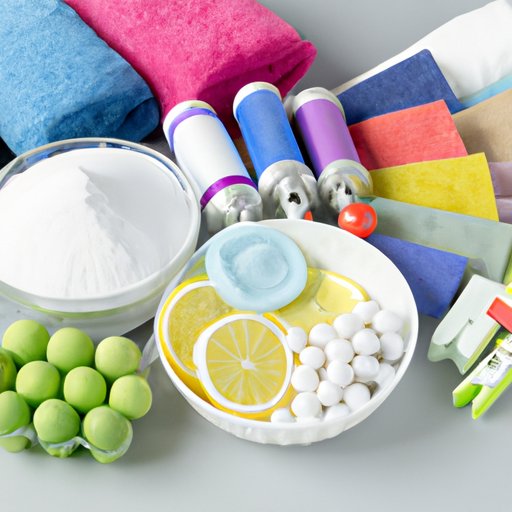Introduction
Dryer sheets are small fabric sheets that are placed in a clothes dryer along with laundry items. The sheets contain special chemicals that help reduce static electricity, soften fabric, reduce wrinkles, and add scent to the laundry. While dryer sheets are convenient and effective, it’s important to understand how they work so that you can make an informed decision about whether or not to use them.

Exploring the Science Behind How Dryer Sheets Work
When fabrics are placed in a dryer, they rub against each other and generate static electricity. This static electricity then causes the fabrics to cling together and can also cause the fabrics to attract lint, dust, and pet hair. To combat this problem, dryer sheets are designed to reduce static electricity.
The main way that dryer sheets reduce static electricity is through the use of fabric softening agents. These agents are positively charged molecules that attach themselves to the negatively charged fabric fibers. This neutralizes the static charge and prevents the fabrics from clinging together.
The Benefits and Drawbacks of Using Dryer Sheets
Using dryer sheets has several benefits. First, they reduce static electricity, which keeps fabrics from clinging together and attracting lint, dust, and pet hair. Second, the fabric softening agents in the dryer sheets soften the fabric. Third, the dryer sheets can help reduce wrinkles in the fabric. Finally, many dryer sheets have added fragrances that can leave your laundry smelling great.
However, there are some drawbacks to using dryer sheets. For example, some people can experience skin irritation or allergic reactions when using dryer sheets. Additionally, some dryer sheets contain chemicals that can be flammable and may pose a fire hazard.

Investigating the Active Ingredients in Dryer Sheets
To understand the potential risks associated with using dryer sheets, it’s important to know what chemicals are used in them. Common active ingredients in dryer sheets include quaternary ammonium compounds, alcohols, fragrances, and colorants.
Quaternary ammonium compounds, also known as quats, are positively charged molecules that attach themselves to the negatively charged fabric fibers. This reduces the static charge and prevents fabrics from clinging together. Alcohols are used to dissolve the quats and other chemicals in the dryer sheets. Fragrances are added to give the dryer sheets a pleasant smell. And colorants are added to make the dryer sheets more visually appealing.

Common Questions About Dryer Sheets Answered
Are dryer sheets toxic? While some of the chemicals in dryer sheets may be toxic if ingested, they are generally considered safe for use in the dryer.
Can I use dryer sheets more than once? Generally, no. Once a dryer sheet has been used, it should be discarded.
Do dryer sheets damage clothes? No, dryer sheets will not damage clothes. In fact, they can help reduce wrinkles in the fabric.
DIY Alternatives to Dryer Sheets
If you want to avoid using dryer sheets, there are some DIY alternatives that you can use. Wool dryer balls are a popular option. They help reduce static electricity and soften fabric without the use of chemicals. You can also use vinegar or baking soda in the dryer as fabric softeners. Both of these substances are safe and effective at reducing static electricity and softening fabric.
Conclusion
Dryer sheets are convenient and effective fabric softeners that reduce static electricity, soften fabric, reduce wrinkles, and add scent to laundry. However, it’s important to understand the active ingredients in dryer sheets and the potential risks associated with using them. If you’re looking for an alternative to dryer sheets, consider using wool dryer balls, vinegar, or baking soda.


